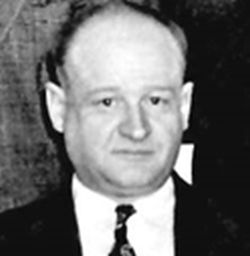
The Case for Encased
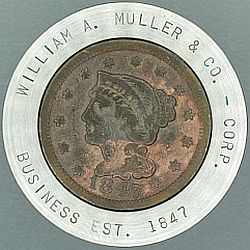
An 1847 LargeCent encased in a steel ring with the following engraved on it. Obverse reads: "WILLIAM A. MUELLER & CO. / BUSINESS EST. 1847"
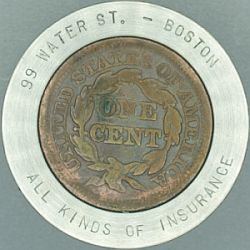
Reverse reads: "99 WATER ST. - BOSTON / ALL KINDS OF INSURANCE"
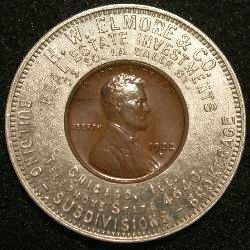
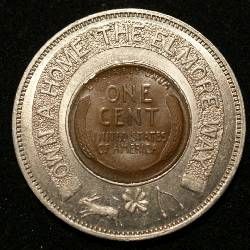
1922 D cent - "H.W. Elmore & Co. Real Estate Investments / Buildings - Subdivisions - Brokerage.
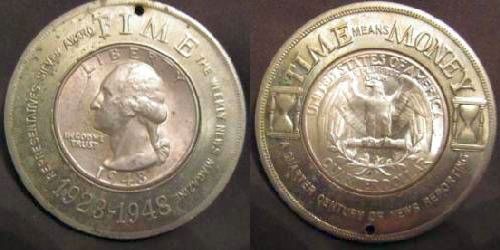
Time Magazine Silver Anniversary Encased Quarter
Some Varieties of Encased
- Date Sets
- Shapes
- Denomination
- Business Type
- Locality
- Material of Encasement
- Foreign
Earl Fankhauser of Ft. Wayne, IN, is the best know salesman of encaseD cents. He traveled throughout the Midwest selling encased cents. On most of the encased, he sold his name appears across the bottom of the reverse in very tiny letters. There are collectors of Fankhauser encased cents. See "The Penny Man"
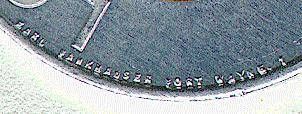
Encased cents are the best known encased coins. There are encased coins of all denominations including, not a few foreign. Of the foreign encased, the best known are Canadian. I have a Canadian encased large cent from 1913. I also have an encased large sent from the US (1857) in an engraved stainless steel ring. There are many encased silver dollars, both Morgan and Peace dollars. Name the denomination and someone has encased it. So one way to collect encased is by denomination
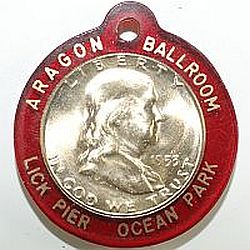
Plastic Encased fob 1939 Lick Pier Ocean Park, CA., obverse and reverse.
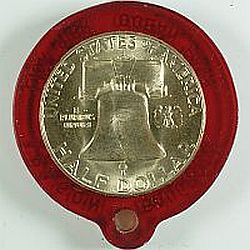
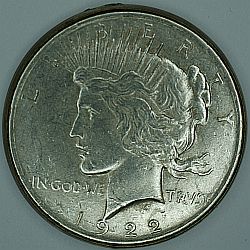
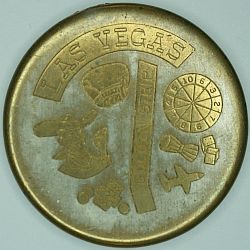
An additional variety is the shape of the encasement. The 1 3/8 inch aluminum ring or round shape is the best known. There are 1 1/14 inch round ones and 1 3/7 inch as well. Bear in mind that the striking process alters the size slightly. As for shapes, I have seen a Maple Leaf shape for Canada, chamber pots, horseshoe shape, squares and ovals, teddy bears, wine goblets, and lantern-shaped encasements. As you see, there are quite a few possibilities of ways to build a unique collection of encased coins. Below are a few of the varieties of shapes. The round and horseshoe being typical, and the other shapes special. (More images are available on other pages of the site see >>Varieties Page)
The material that the encasement is made of is an additional way to collect encased. The typical encasement is a round aluminum ring with a cent clenched in place as the design elements are pressed into the encasement. There are plastic encased using traditional shapes for the encasement. With plastic there are hard encasement with the Lick Pier encased half dollars as an example and there are soft plastic horseshoe shaped encased cents. Vulcanite is another material that was used to encase cents for the 1901 Pam Am Expo. Celluloid is used in encased mirrors and encased buttons. There are wooden nickels with a cent encased in the center, at the top of this page is a 1847 large cent encased in stainless steel.
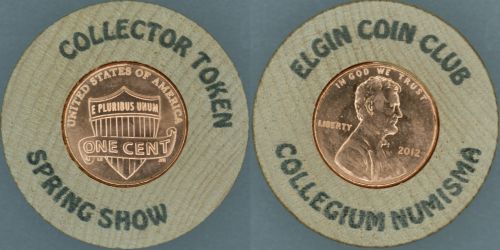
Encased Cent In A Wooden Nickel - Obverse reads: "COLLECTOR TOKEN / SPRING SHOW" The reverse reads: "ELGIN COIN CLUB / COLLEGIUM NUMISMA"
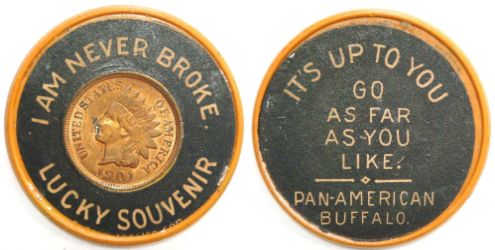
Pam Am Expo - Celluloid Encased 1901 Indian Head Cent Obverse Reads: "I AM NEVER BROKE / LUCKY SOUVENIR" and the reverse reads: "IT'S UP TO YOU / GO AS FAR AS YOU LIKE / PAN-AMERICAN / BUFFALO"
Home | Articles | Varieties | Coin Links | About | Terms of Use
Site Copyright 1999-2021 by Bruce Perdue Email: Webmaster All Rights Reserved ©Copyright Bruce Perdue
